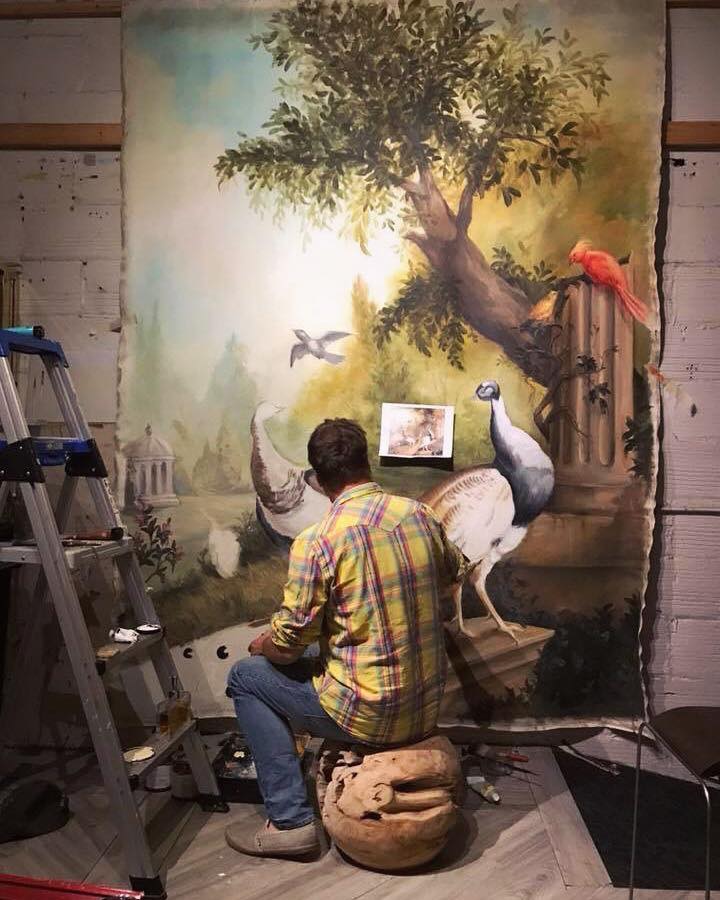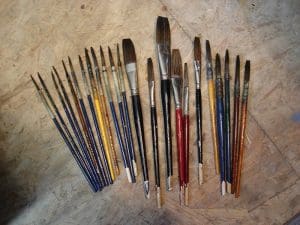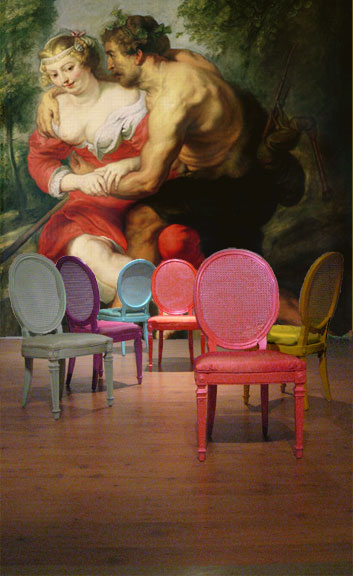Learn the Rules like a Pro
So you can Break them like an Artist
~Pablo Picasso ~
It took a long time to learn the rules. My interest in art started early on out of a natural affinity for expressing myself through crayons at age 4. Drawing on any paper I could find, cardboard or other surface, I copied everything witnessed through my eyes of nature around me. All one had to do was look at my room and drawings were everywhere, and when I ran out of paper, I started in on the walls. It drove my parents nuts, but they also recognized that there was something there; this quiet, introverted kid was displaying an early passion for a vocation. Art.

It didn’t take long for my mother to find a retired art teacher who made extra money teaching young students at her kitchen table inside her home every Wednesday night. Her name was Mrs. Brown. There I sat with 2-3 other kids, (all of us between 6-8 years old), learning how to correctly draw tigers, giraffes, people’s faces and figures. It was amazing to go to her house every Wednesday night and bring home something that didn’t look like stick figures or pencil scratchings. I was learning and loving it. At the time, I hadn’t known that Mrs. Brown was an accomplished artist showcasing in galleries around the country, or that what she was teaching her students were lessons in drawing that were at the level of a teenager.
In fourth grade I had another phenomenal teacher who helped to shape and mold me, Mrs. DiGangi. While she taught the usual fourth grade curriculum, the main focus was for all her students to learn about culture and art. Our days were spent learning classical music, naming the song by ear along with the composer. We had to recognize famous art and the artists who painted each piece and the year created. She showed us how to write our own poetry, plays, scripts and how to produce a theater show. This was not your typical public school fourth grade class. What none of us knew, was that Mrs. DiGangi believed her students so much, that she taught at a 12th grade level of competence, hoping it would all sink in. For me, it certainly did.

Throughout my teens, 20s and 30s, I learned the rules of Art and became a pro. I could copy classical artwork with ease; had no issues coming up with creative solutions to any project handed to me in regards to art and design for residential and commercial spaces. Many people loved that I could replicate an old masters style of painting, but copying such things only left me partially fulfilled. I needed more. I needed to explore.
“Many people loved that I could replicate an old masters style of painting, but copying such things only left me partially fulfilled.”
 I did so first by simply changing colors and compositions of the things I had been taught. With each step into unknown territories, I became bolder in my attempts to create something of significance. I failed more often than I succeeded. Still, I got paid for the work, though in my own head I hadn’t done anything mind blowing. I felt stuck. Should I keep on doing what pays the bills or should I explore? That kind of decision is like leaping off a cliff, hoping there’s something to soften the blow below.
I did so first by simply changing colors and compositions of the things I had been taught. With each step into unknown territories, I became bolder in my attempts to create something of significance. I failed more often than I succeeded. Still, I got paid for the work, though in my own head I hadn’t done anything mind blowing. I felt stuck. Should I keep on doing what pays the bills or should I explore? That kind of decision is like leaping off a cliff, hoping there’s something to soften the blow below.
It can be an arduous task to find one’s voice, to become noted in a crowded room. I had fallen into the trap of comparing myself to other artists, thinking they were better, more skilled and more accomplished. They certainly knew how to self-promote. Who was I, then, to have all this education but no resonating voice. I dove further into the abyss, trying to find what excited me beyond what had been learned. I needed to transform.

That’s when I founded Omforme. A word that literally means “to transform” in Norwegian. Starting with a set of chairs that I had painted in saturated pastels in a new type of paint called chameleon paint. The paint actually changes colors as you walk around the chairs. Pink turns to orange, blue turns to green, etc. I put a listing up on this new website I had heard about called Etsy. Lots of creatives and craftspeople had already been successful on Etsy, yet I had huge doubts that anything would come of my listing. For sure I thought, nothing will sell, it will just sit there for everyone to laugh at and talk about how gaudy the chairs were. How they would never have anything like that in their homes – too much! On the spur of the moment, I decided to add one of the murals I had painted – yet another copy of classical work as the backdrop. At least there would be something people would like even if my chairs proved to be visually appalling.
Yeah, I was prepared for the worst. What actually happened instead, moved me: people started responding favorably. I couldn’t believe it. To see all the “likes” and “saves” people were doing of my stupid chairs and replica art. To them, what I had created wasn’t stupid, it was new and exciting. That’s when I realized I had found my voice. The chairs and the mural sold to the same person within two weeks of it being listed on Etsy. I was amazed and humbled from the experience. I knew I had to continue being able to produce interesting works of art through furniture restoration and design. To do things in a way that others hadn’t seen before. What I didn’t realize was that I had unwittingly learned how to break the rules and become an artist for real, in my own mind.
I still produce colorful furnishings. While many are uncomfortable having such boldness in their homes, there is a whole group of people who crave the unusual; trying to find their voice too. I am thankful for them, for I will never stop breaking the rules. After all, it’s why rules exist in the first place, to break with tradition and push us forward and grow from.